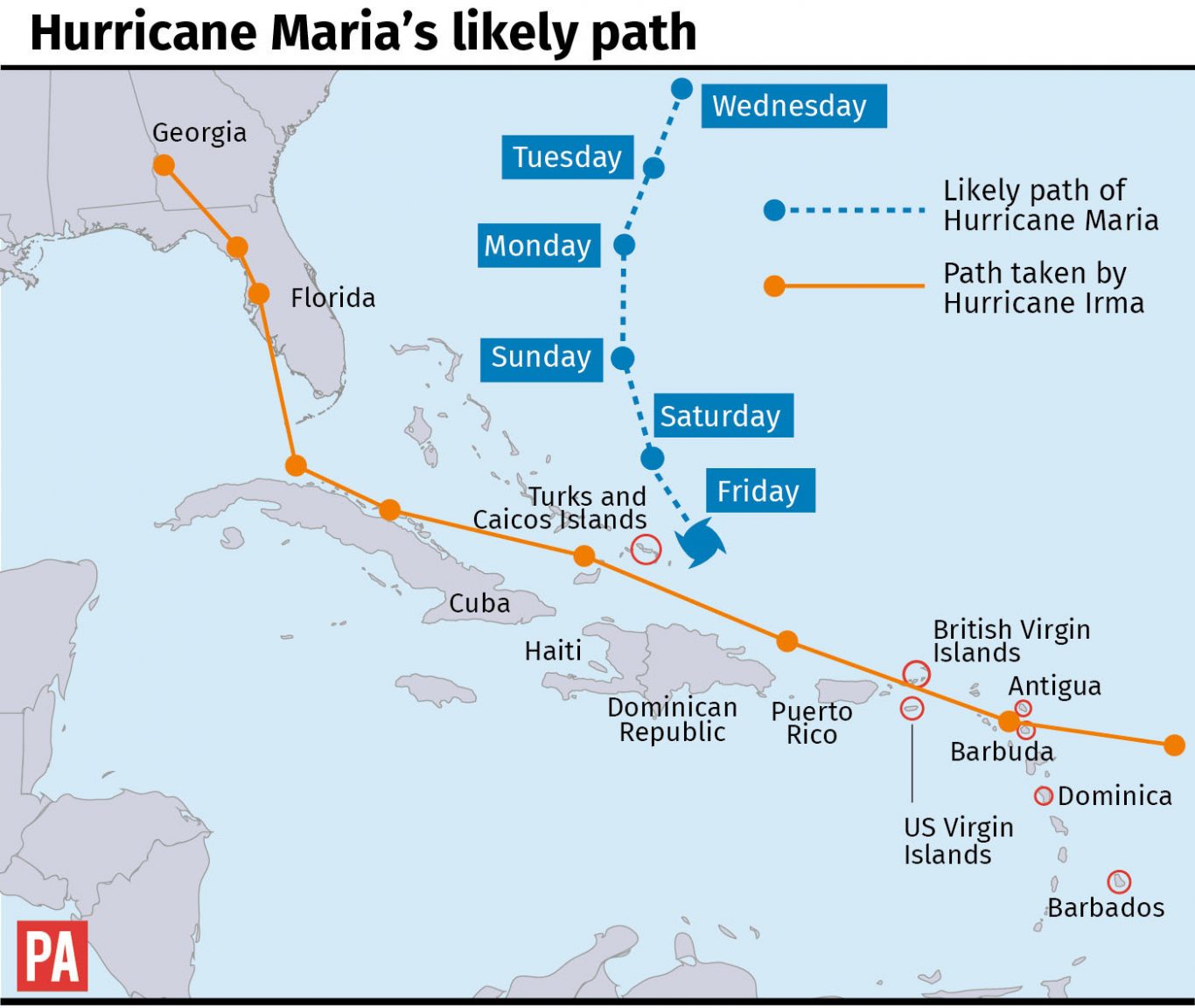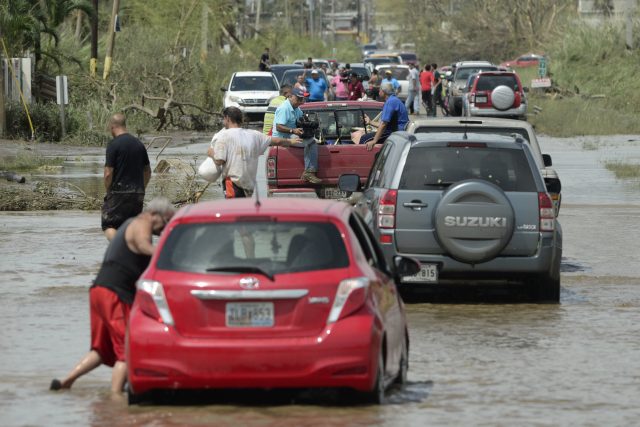
Puerto Rican officials could not reach more than half their towns amid a push to evacuate tens of thousands of people over a failing dam as the disaster wrought by Hurricane Maria becomes clear.
Authorities launched an evacuation of the 70,000 people living downstream of Guajataca Dam in north-west Puerto Rico.
They sent buses to move people away on Friday and posted frantic warnings on Twitter that went unseen by many in the blacked-out coastal area.
EMERGENCY: Guajataca DAM failure. Flash Flood Warning for Isabela & Quebradillas. #prwx
— NWS San Juan (@NWSSanJuan) September 22, 2017
“This is an EXTREMELY DANGEROUS SITUATION,” the National Weather Service wrote. “All the areas around the Guajataca River must evacuate NOW. Your lives are in DANGER.”
The 316m dam, built around 1928, holds back a man-made lake covering about two square miles (5 sq km).
More than 15 inches (nearly 40cm) of rain fell on the surrounding mountains after the Category 4 Maria left the island on Wednesday afternoon, swelling the reservoir.
An engineer inspecting the dam reported a “contained breach” that officials quickly realised was a crack that could be the first sign of total failure, US National Weather Service meteorologist Anthony Reynes said.
 (PA Graphics)
(PA Graphics)
“There’s no clue as to how long or how this can evolve. That is why the authorities are moving so fast because they also have the challenges of all the debris. It is a really, really dire situation,” he said.
Government spokesman Carlos Bermudez said that officials could not reach 40 of the 78 municipalities on the island more than two days after the hurricane hit, toppling power lines and mobile phone towers and sending floods cascading through city streets.
Officials said 1,360 of the island’s 1,600 phone towers had been brought down, and 85% of above-ground and underground phone and internet cables were knocked out.
This dam in NW Puerto Rico reportedly failed this afternoon prompting thousands to evacuate downstream. #HurricaneMaria #Guajataca pic.twitter.com/6PBXVdmV92
— Anthony Farnell (@AnthonyFarnell) September 22, 2017
With roads blocked and phones dead, officials said, the situation may be worse than they know.
“We haven’t seen the extent of the damage,” Governor Ricardo Rossello said. He could not say when power might be restored.
Major General Derek P Rydholm, deputy to the chief of the Air Force Reserve, said at the Pentagon that it was impossible to say when communication and power would be restored.
He said mobile communications systems are being flown in but acknowledged “it’s going to take a while” before people in Puerto Rico will be able to communicate with their families outside the island.
Until Friday, he said, “there was no real understanding at all of the gravity of the situation”.
The #Guajataca dam could completely fail as water continues to wash away the base of the dam. #HurricaneMaria pic.twitter.com/zZVE0rx05R
— WeatherNation (@WeatherNation) September 23, 2017
The island’s electric grid was in sorry shape long before Maria struck. The territory’s debt crisis has left agencies like the state power company broke.
It abandoned most basic maintenance in recent years, leaving the island subject to regular blackouts.
“Some transmission structures collapsed,” Mr Rossello said, adding that there was no severe damage to electric plants.
He said he was distributing 250 satellite phones from Fema to mayors across the island to re-establish contact.
The death toll from Maria stood at six, but was likely to rise.
 (Carlos Giusti/AP/PA)
(Carlos Giusti/AP/PA)
At least 27 lives in all have been lost around the Caribbean, including at least 15 on hard-hit Dominica. Haiti reported three deaths; Guadeloupe, two; and the Dominican Republic, one.
Across Puerto Rico, more than 15,000 people are in shelters, including some 2,000 rescued from the north coastal town of Toa Baja.
Some of the island’s 3.4 million people planned to head to the US to temporarily escape the devastation.
At least in the short term, though, the soggy misery will continue: Additional rain – up to 6 inches (15cm) – is expected over Saturday.


Why are you making commenting on The Herald only available to subscribers?
It should have been a safe space for informed debate, somewhere for readers to discuss issues around the biggest stories of the day, but all too often the below the line comments on most websites have become bogged down by off-topic discussions and abuse.
heraldscotland.com is tackling this problem by allowing only subscribers to comment.
We are doing this to improve the experience for our loyal readers and we believe it will reduce the ability of trolls and troublemakers, who occasionally find their way onto our site, to abuse our journalists and readers. We also hope it will help the comments section fulfil its promise as a part of Scotland's conversation with itself.
We are lucky at The Herald. We are read by an informed, educated readership who can add their knowledge and insights to our stories.
That is invaluable.
We are making the subscriber-only change to support our valued readers, who tell us they don't want the site cluttered up with irrelevant comments, untruths and abuse.
In the past, the journalist’s job was to collect and distribute information to the audience. Technology means that readers can shape a discussion. We look forward to hearing from you on heraldscotland.com
Comments & Moderation
Readers’ comments: You are personally liable for the content of any comments you upload to this website, so please act responsibly. We do not pre-moderate or monitor readers’ comments appearing on our websites, but we do post-moderate in response to complaints we receive or otherwise when a potential problem comes to our attention. You can make a complaint by using the ‘report this post’ link . We may then apply our discretion under the user terms to amend or delete comments.
Post moderation is undertaken full-time 9am-6pm on weekdays, and on a part-time basis outwith those hours.
Read the rules here